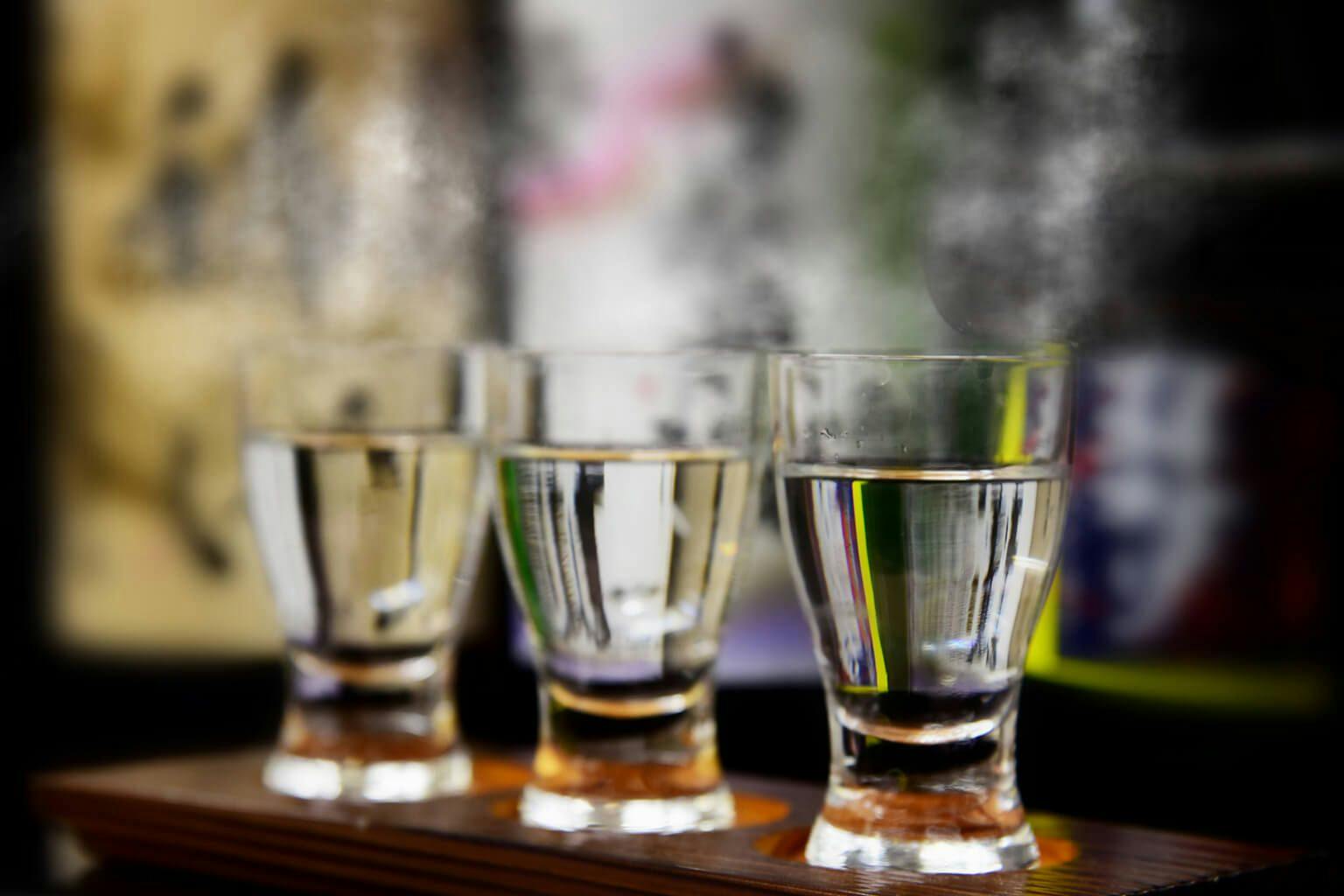How To Host the Best Sake Tasting
Table of Contents
Family gatherings, company parties, and nights spent with friends can often become predictable and repetitive. If you’re someone who likes to mix things up, consider adding sake tastings to your rotation. It’s a great way to break the mold and spend quality time with your loved ones. So, why not bring out the bottles and try something new?
This is a comprehensive guide for hosting an enjoyable and captivating sake tasting event, regardless of one’s familiarity with the drink. If you’re a novice or need assistance in understanding sake, take a moment to read “What Is Sake?” But don’t worry, with these tips, you’ll be tasting sake like a pro in no time.
Based on my experience, hosting sake tastings can be an excellent way to add structure to a gathering, similar to a wine tasting or a game night. However, unlike wine tastings, sake tastings offer a unique opportunity to showcase a drink that many of your guests may not know much about. This is what makes it so exciting! I’ve found that my guests are usually very open and engaged, asking lots of questions and showing genuine interest. Even those who have attended my tastings before come away with new insights. Sake is a nested fractal — the more I learn, the more I realize how little I know.
There are many ways to approach a sake tasting, and I’ve personally tried about a dozen of them. You could organize it based on different rice varieties, breweries, temperatures, milling rates, yeasts, regions, or even water sources. Another approach is to taste the same sake in its pasteurized and unpasteurized (“nama”) forms. You could also choose a lineup by season. The potential combinations are as varied as sake itself.
While we can probably agree a plethora of options is a good problem to have, it can nonetheless be difficult for beginners to know where to start. I would recommend reading the “Best Bottles & Brands for Beginners” guide, or simply picking up a Starter Set if you’re new to sake tasting.
Now that we’ve broken ground, let’s get started with the fun stuff: the how-to’s!
How to do a sake tasting: 3 simple steps
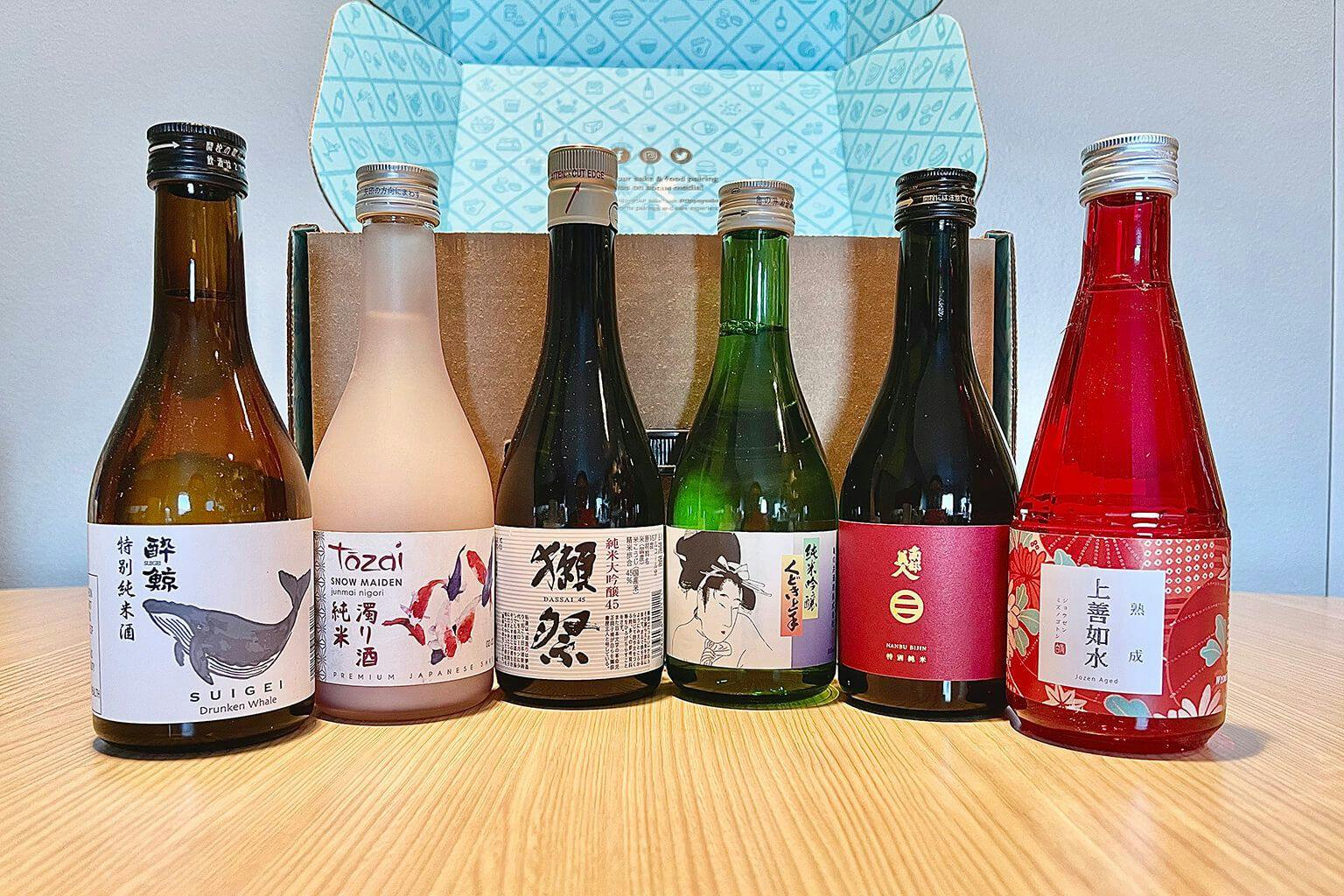
Tippsy’s Starter Set, featuring six different mini-bottles, makes hosting a sake tasting easy. | Photo by ketobyassociation. (@ketobyassociation)
When it comes to tasting sake, there are three main aspects to consider: sight, smell and taste. This is also how sake judges approach their job. In order to truly comprehend the essence of a sake, it is essential to engage with it through all three dimensions.
However, there are additional factors to take into account. Since most of us won’t get the chance to try floating sake balls in zero gravity, mise-en-place is crucial to the overall experience. Sake ware, temperature, food pairings, and visuals all play a significant role in the tasting.
Consider also the kind of tasting you want to run. It’s never bad to hand out spit cups for guests who aren’t prepared to imbibe a lot or, crucially, have to drive soon. It’s also advisable to offer water when tasting different varieties of sake, especially if you plan to taste many of them in one go. Based on personal experience, sampling multiple types of sake without cleansing your palate can hinder your ability to detect subtle flavor nuances. By the same token, even if you can handle sipping 15 different kinds of sake, it’s a good idea to narrow your scope to avoid palate fatigue.
With that in mind, let’s dig into the three steps of tasting.
Sight: Eye for color
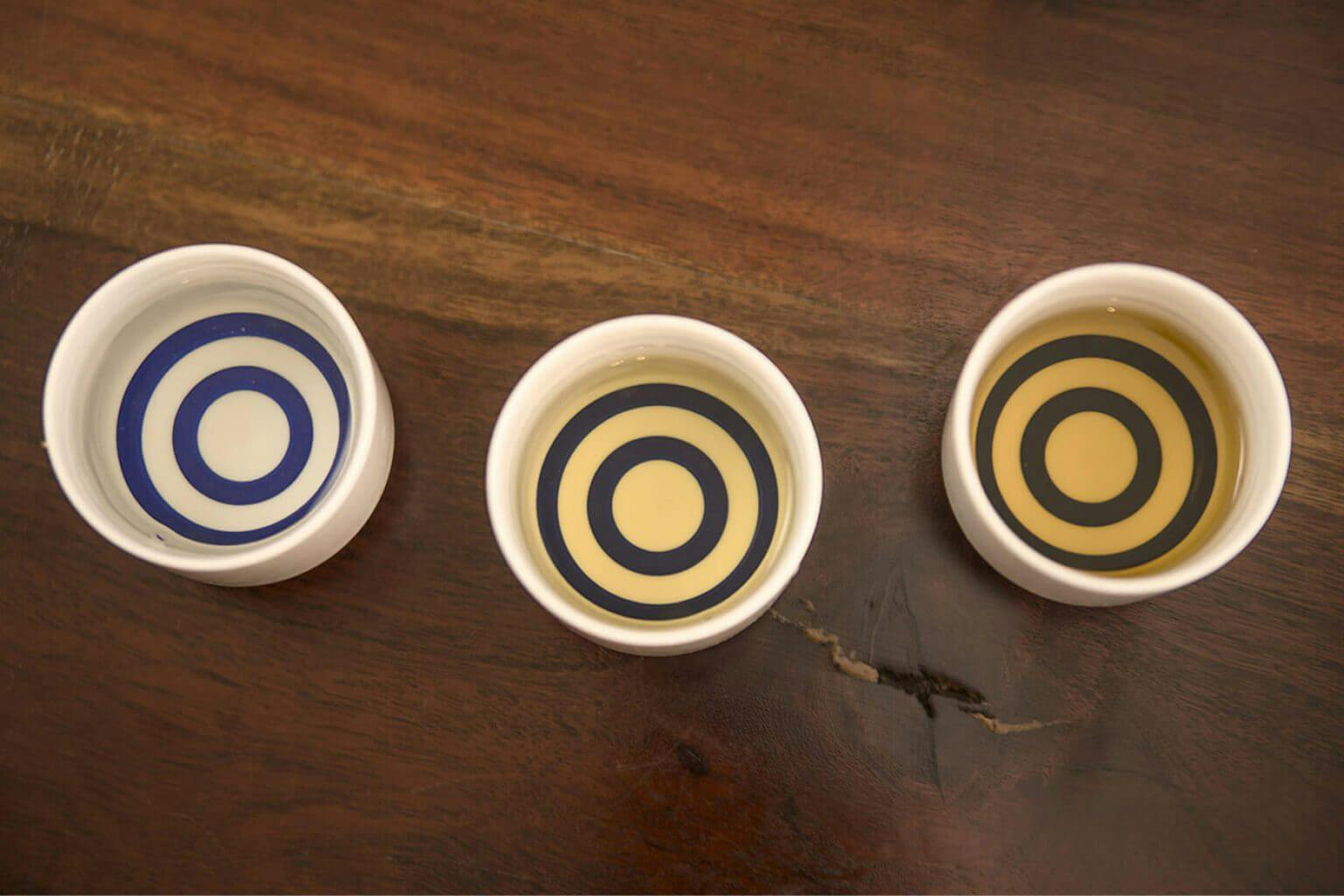
The contrast provided by the blue rings of the white janome cup make it easier to analyze sake color.
Elements: Clarity, color
Sake comes in a variety of colors, which can provide a clue, without even having to smell or taste, as to the style you are about to try. In general, sake that doesn’t have “ori” (sediment) or “kasu” (sake lees) is clear. Brewers take pains to remove color from their filtered sake, such as with the process of charcoal fining. There are, as always, exceptions to this rule.
For example, “muroka” is a type of sake that hasn’t undergone the charcoal fining process, resulting in a light-yellow hue. “Koshu” (aged sake) will also have color, ranging from straw to golden to a toast-like brown like you might see with whiskey.
To aid you in judging color, there’s no better tool than a “janome” cup. Literally meaning “snake’s eye” in Japanese due to its distinctive pattern of two concentric blue rings, these cups provide the contrast that can help you distinguish even subtle color variations in your drink. (You can redeem your Tippsy rewards points for a janome cup in the rewards section of your account!)
Steps
Pour: Start by pouring an ounce or two of sake into your guests’ cups. I usually pour for everyone at my tastings, but for a more casual, social experience, you can have each person pour for the person next to them in a round. Pouring for others is a demonstration of sake etiquette and the mark of a good host.
If you don’t have a janome cup, use a clear glass (white wine glasses work well) and a sheet of white paper, then hold the glass up to the paper, letting the light shine through your sake. This will project the color onto the paper nicely.
It’s important to keep the style of sake that you’re drinking in mind as you look at its color. If you pour a junmai ginjo that doesn’t explicitly state it’s a “muroka” and you see a yellow tinge, it could be a sign that oxidation has begun to set in, indicating it’s perhaps been open longer than intended. For more information, read “Does Sake Go Bad?” and “How To Store Sake.”
Examine: Look at the bottom of the cup. Focus on the color at the edge of the rings. Does it look crystal clear, or can you detect a hint of color? Is it a cloudy nigori? If you’re hosting a tasting for friends, these are things that can help you talk about sake types.
Smell: Nose for aroma
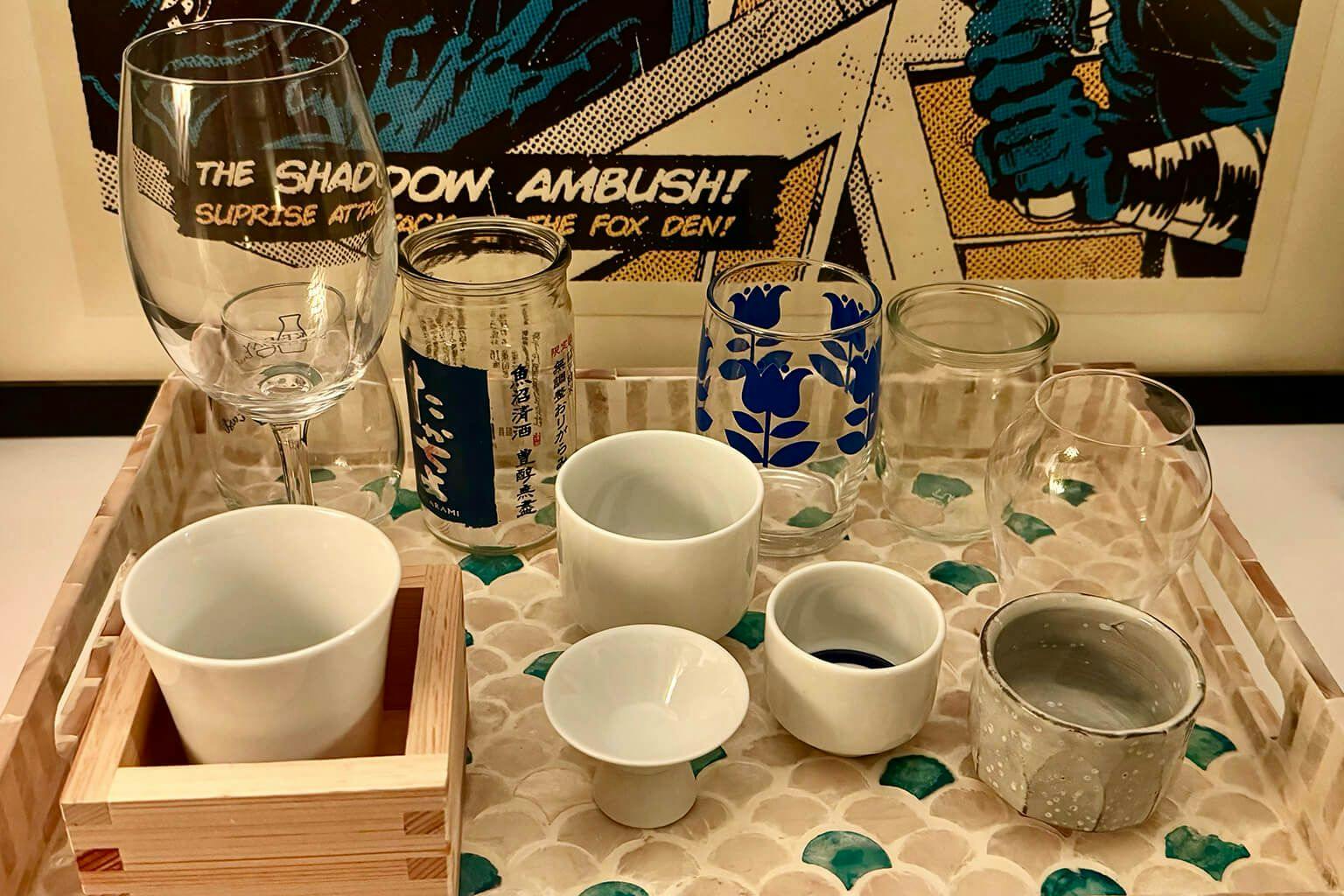
There are so many types of sake vessels, from small ochoko to your regular wine glass. Experimenting with different sake ware is one way to enrich your sake tasting experience. | Photo by Sam Fairchild.
Elements: Intensity, individual aromas, balance
Choosing the right glassware is going to be a running theme here. If you are using an “ochoko” (the small, round cups commonly used to serve sake of any temperature), be aware it can be difficult to get a good whiff without dipping your nose. The same can be said of “guinomi,” which are slightly larger cups with the same proportions as ochoko, although the larger volume allows for a greater concentration of aromas. “Sakazuki” (small, generally stemless cups with wide rims) have a bit more surface area that can diffuse smells effectively, especially for sake with a bit more heft.
But my favorite glassware for tastings are “karai” (stemless, tulip-shaped tumblers) and white wine or wine tasting glasses (Riedel makes some of the best-in-class glass), all of which concentrate aromas at the tapered tops and give you a perfect portal to get your schnoz as close to the liquid as possible without needing a napkin.
Steps
Swirl: Once you have selected the glass or glasses you’re going to use, you want to start by asking your guests to swirl (assuming you have glasses that allow for it) the liquid in their glasses a bit to let the aromas gather strength.
First smell: Have them start with an initial quick smell, which will give them the top notes (primary aromas made up of larger molecules that are easier to detect) and intensity.
Second smell: After that, go back for a deeper sniff, which will give them the middle and base notes (most of the aroma molecules that appear as the top notes fade).
Examine: Talk through what everyone is smelling. There are many comparisons that one can make, but some of the most common aromatic elements are rice or cereals (steamed, porridge, malt), fruit (apple, melon and banana are predominant, but there are many others that can express themselves like citrus and grape), floral (white flowers, tropical flowers, grasses, etc.), lactic (yogurt, fresh milk, cheese), and herbs and spices (clove, anise, lemongrass). This can be highly style-dependent as well; for example, ginjo and daiginjo tend to present a lot of fruity and floral notes (the term for this in Japanese is “ginjo-ka” or ginjo flavor). Take notes on the aromas you’re smelling and keep them in mind for the next, arguably most important part of the tasting: the tasting!
Taste: Palate for flavor
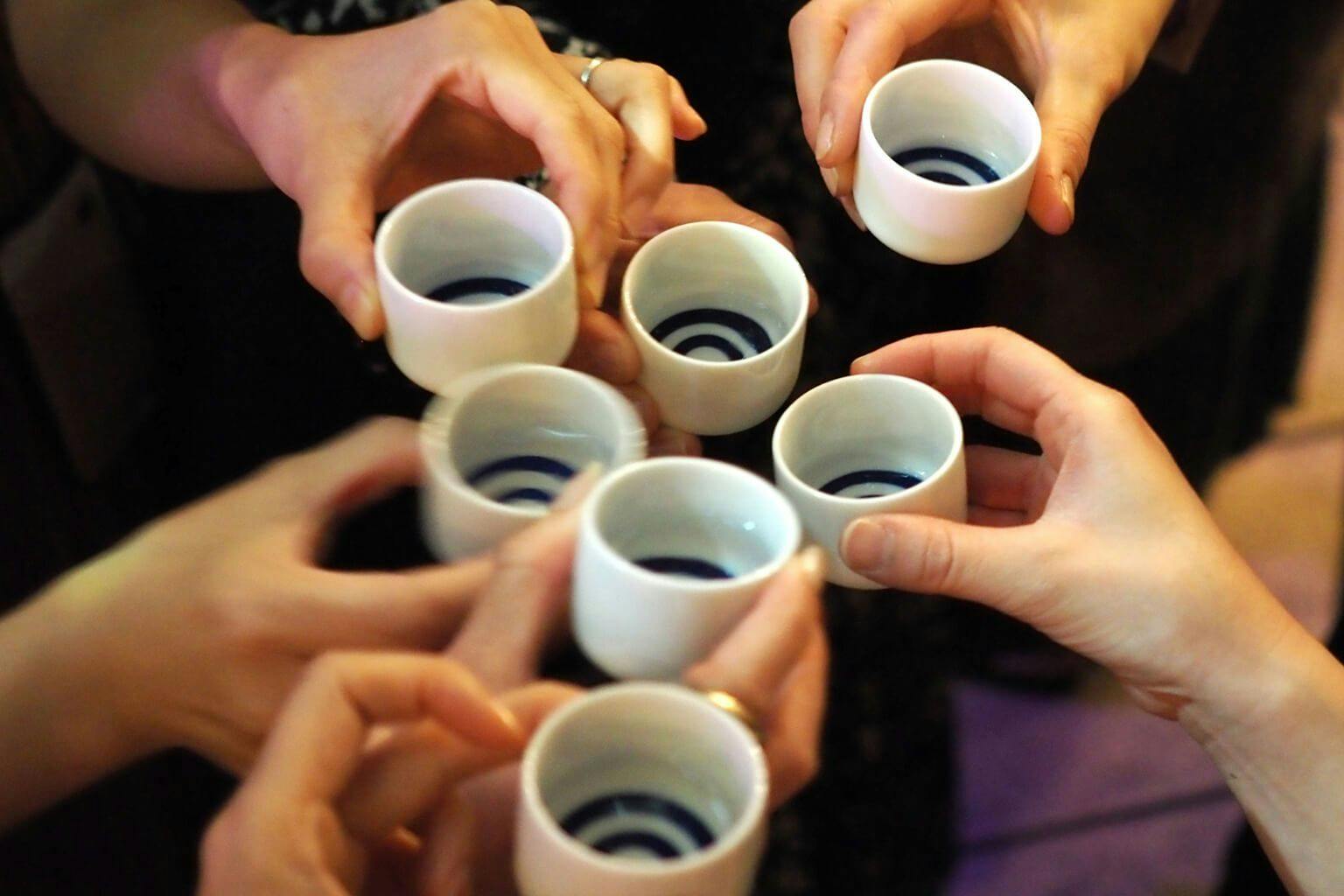
Be sure to kampai (cheers) with your friends
Elements: Body, alcohol, umami, sweetness, acidity, dryness, minerality, balance
OK, but what does your sake actually taste like? Now that you’ve assessed color and aroma, you’ve entered the heart of the sake tasting experience. As mentioned above, glassware can be a crucial part of the experience here, as can temperature; these variables can affect the overall impression of a sake. If you have the time and inclination to do so, consider trying the same sake in a few different vessels and at different temperatures to compare.
Steps
Kampai!: This is the Japanese word for “cheers!” The word itself literally means “empty cup,” but it is commonly interpreted as “drink it up.” Not necessary for every round of tasting, but you may find yourself doing it anyway.
First taste: In the same vein as smell, start with an initial sip. Have your guests hold the sake in their mouths for a few seconds and swish it around to coat their palates, then expectorate. When asking for first impressions, expect few volunteers at first. Positive reinforcement and prompting can help people get comfortable.
Second taste: Let’s focus on some of the other elements during the second sip. Pay attention to the body, astringency of the alcohol, and sourness. If you’re comfortable, let the sake drain out of your mouth instead of spitting it out, and notice how much saliva follows. The more saliva, the more acidic the sake.
Examine: This section is great for peppering guests with questions: Did they taste any of the notes that they smelled? How did it change as they let it sit? Was it sweeter, or more umami? Was there a notable bitterness? Did it sit heavy on the tongue? Was there a burn from the alcohol, or was it fairly smooth? Was one flavor dominant, or did they meld together? How dry was it? These questions can lead to discussions about other aspects of the sake, from rice polishing ratio to SMV.
Bonus tips: 5 ways to kick it up a notch
That’s it! That’s the whole tasting process in a rather large nutshell. But that’s not the end of the line, because there’s a whole host of choices you can make around the actual tasting that will affect the experience. Tastings are, at their core, explorations. Not just of flavors and smells but history, culture, people, craft and geography. Here are some helpful tips to make sure that your guests have an unforgettable experience.
Tip 1: Use the right glass
This one cannot be stressed enough. Serving sake in the glass or cup that lets it express itself makes all the difference. Fortunately, “How To Drink Sake with the Right Sake Cup” provides a really thorough primer for glass types as well as pourers, and lays out recommendations for different sake styles.
Tip 2: Try different categories and regions
In the spirit of exploration, it can be helpful to set your tasting up with a theme. You can go broad by comparing sake that comes from a specific region or prefecture (or as I recently did at one of my tastings, moving from north to south through the map of Japan); develop a lineup of a particular style or category; or get really specific with rice varieties, water sources, or if you want to really indulge your nerdiness, yeast strains. Much of this information can be gleaned from the “Characteristics” section on each sake’s page on Tippsy. You can also use category sorting to help you narrow down your options.
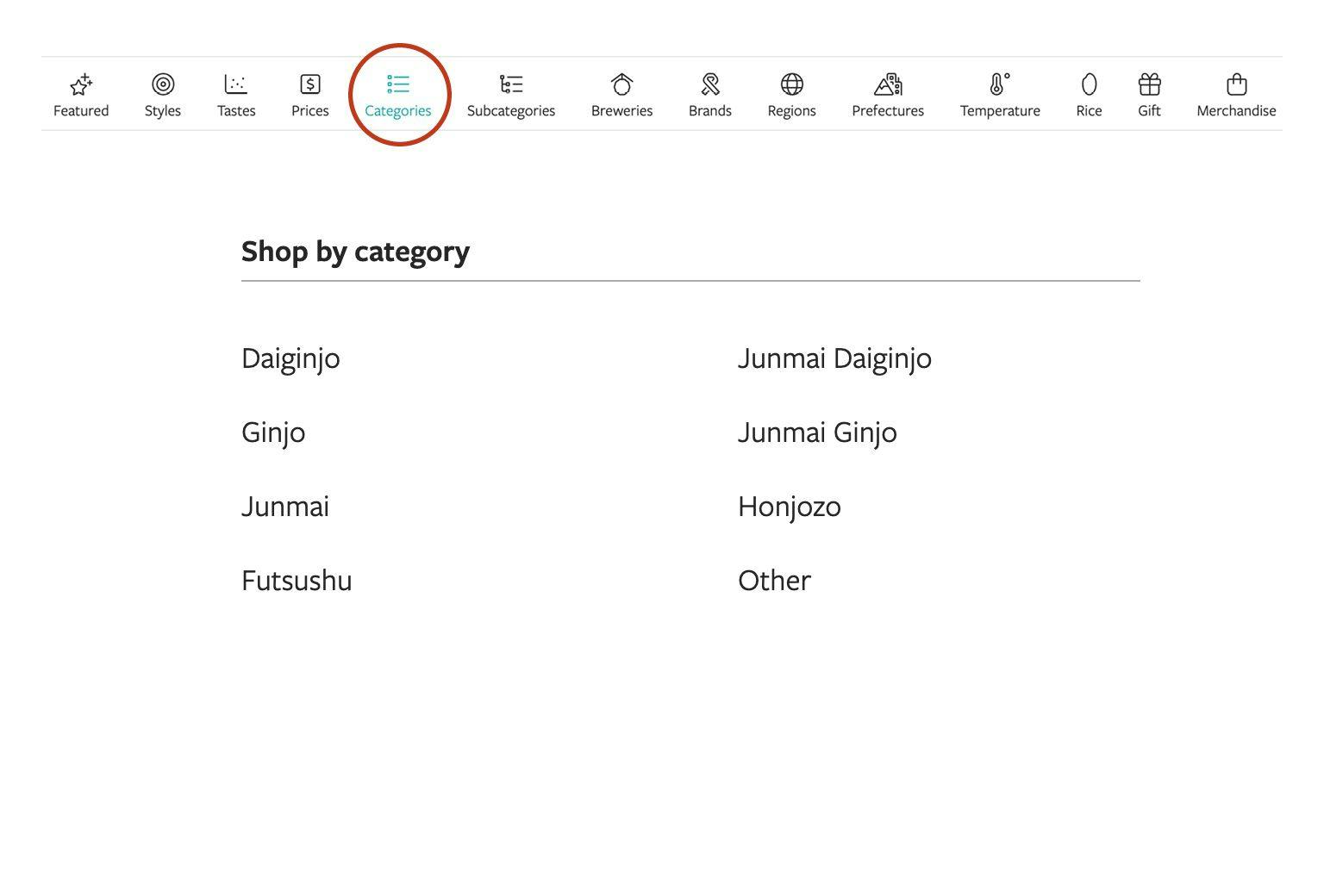
Sake type
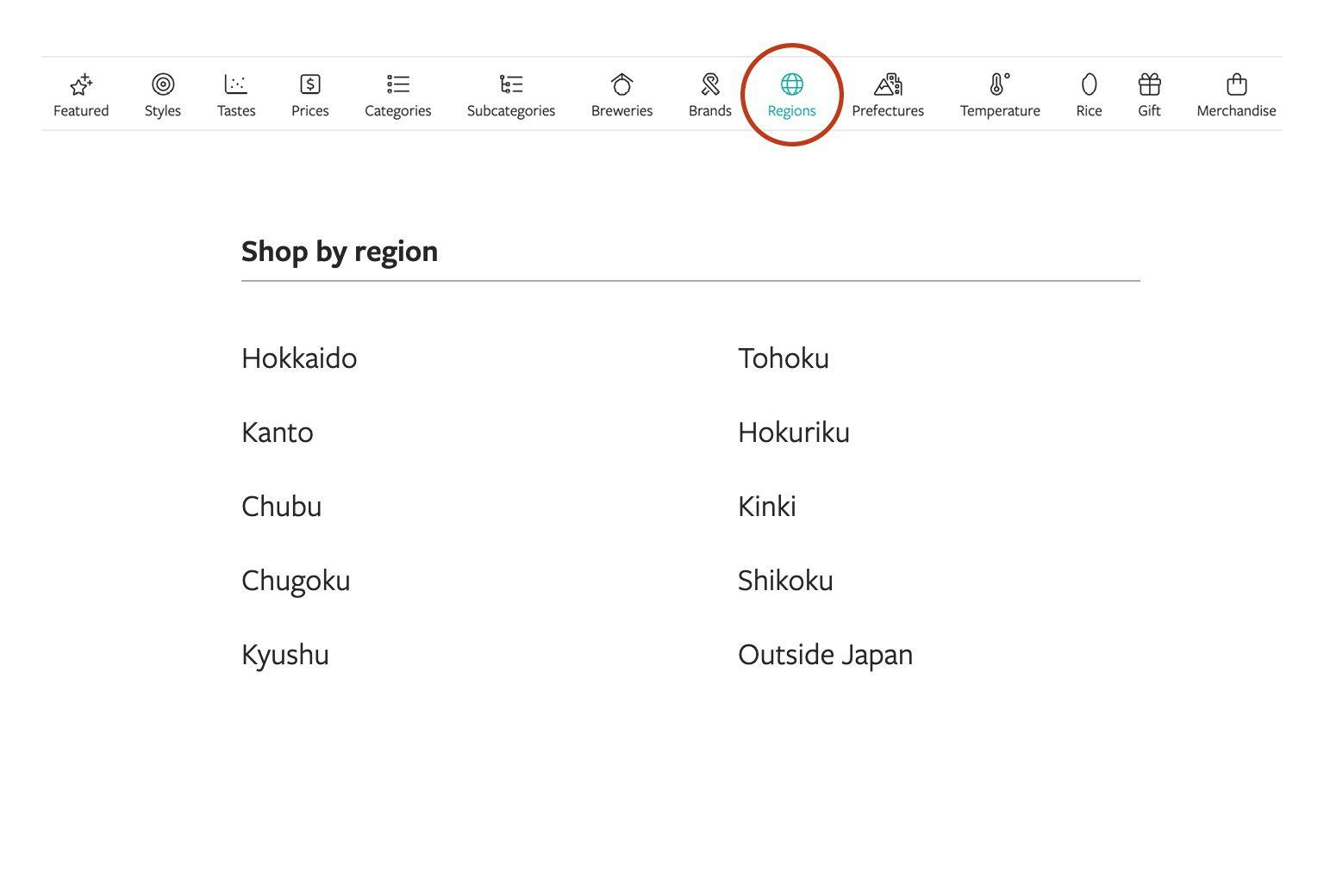
Region
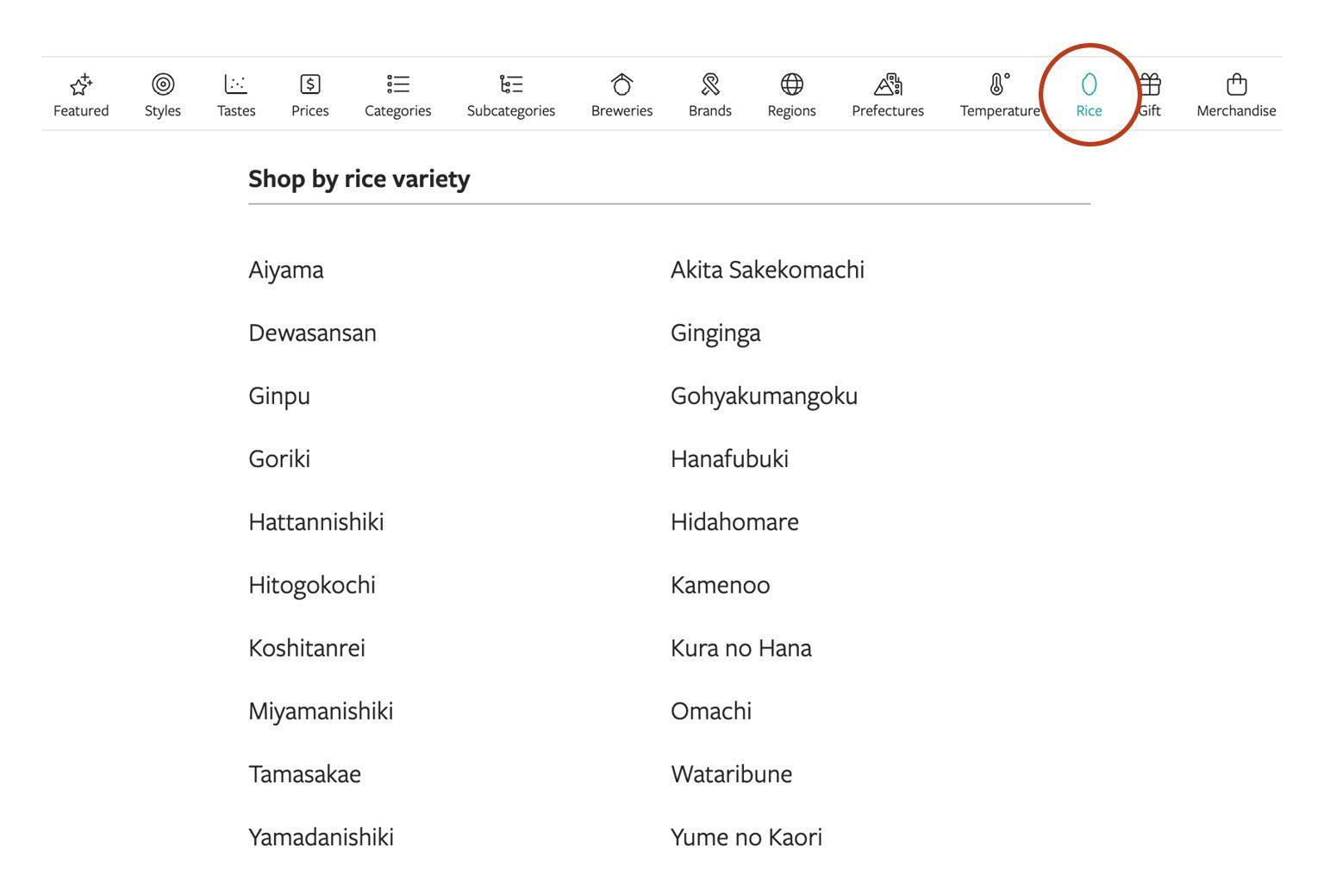
Rice
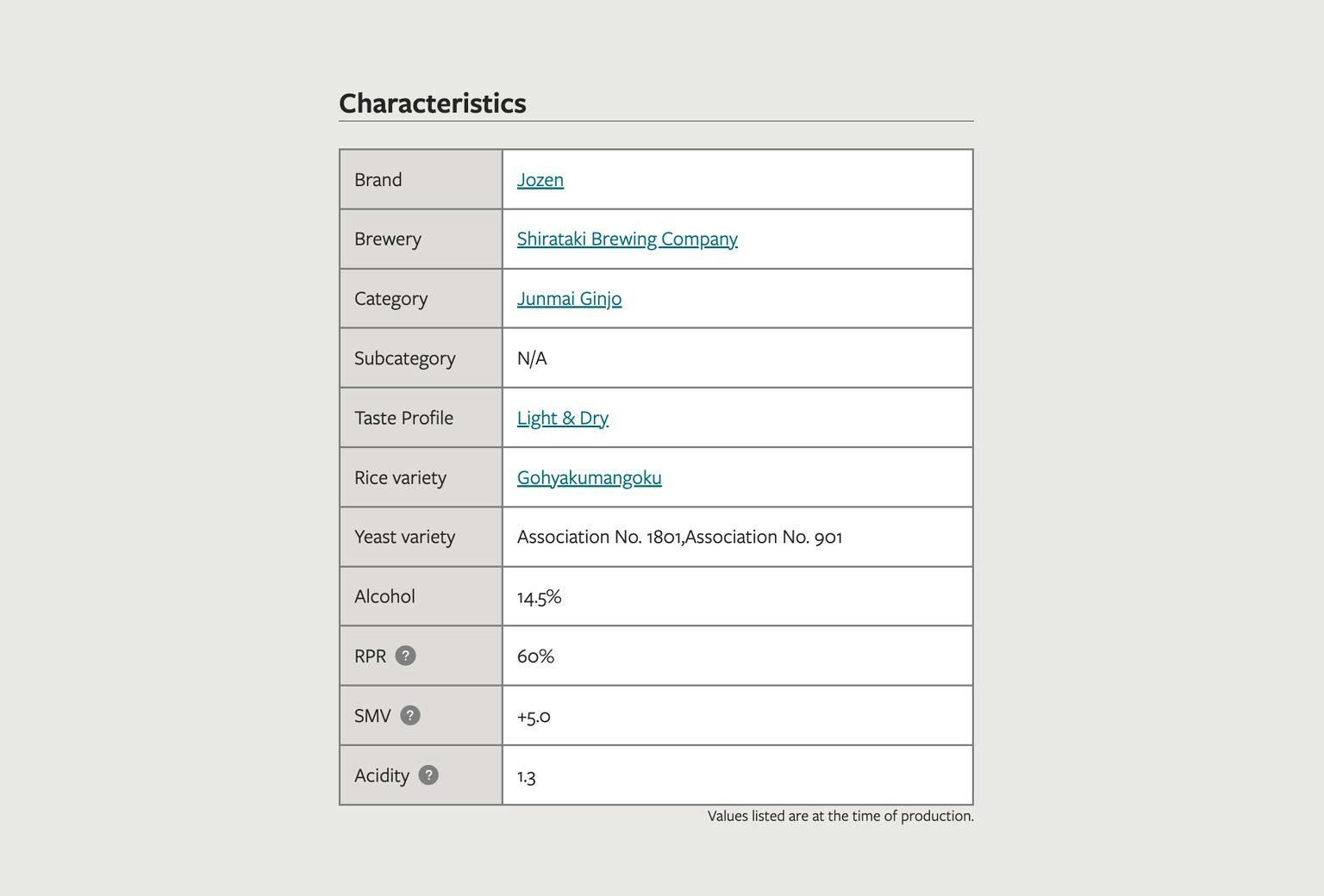
Characteristics.
Tip 3: Serve at Tippsy’s recommended temperature first
All sake styles have a generally well-defined range of temperatures at which they express themselves best. It helps to try to stay within that range for tasting because sake changes pretty rapidly outside of its comfort zone. More delicate sake will lose subtle notes at higher temperatures, while heating big and bold sake might actually cause some of the richer textures and additional umami to come out. Contrary to the stereotype that good sake is always served cold, there are in fact designations in Japanese for each temperature on the gradient between “yukihie” (“winter snow”; around 5 C or 41 F) to “atsukan” (“hot sake”; around 50 C or 122 F), which are all tagged to different styles. Hot sake is not bad sake by any stretch! Take a look at some of our best warm sake.
Happily, you can take the assumptions out of it by following the temperature guidance in the “Serving Temperature” section of any given sake on Tippsy. You can also sort by temperature on the home page.
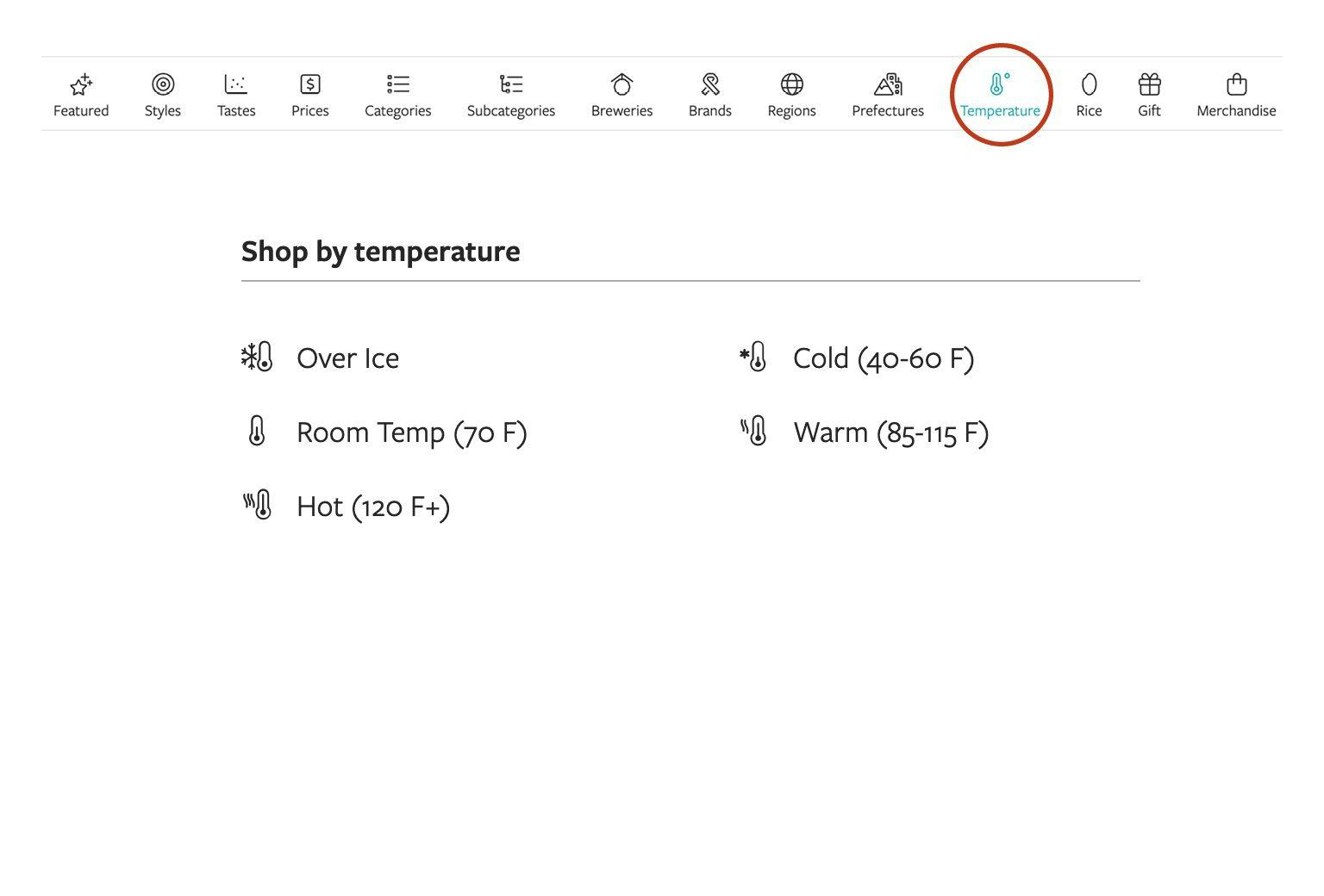
Sort by temperature.

Temperature guidance.
Tip 4: Try the same sake at different temperatures
Here I get to contradict myself a bit, or rather look at the question of temperature from a different angle. Experimentation is a great way to understand why temperature guidance exists, but it can also lead to surprising findings. What if you tried heating up that junmai ginjo just a bit? If it was a little out of balance before, does the heat help reduce the power of its most commanding flavor?
Furthermore, some sake are just as enjoyable warm as they are cold, and can reveal different tasting notes as the temperature changes. You can find sake with multiple temperatures listed on Tippsy, like Otokoyama “Tokubetsu Junmai” or the excellent IWA 5 “Assemblage 3”.

Behold a four-temperature sake!
Tip 5: Discover the perfect food pairing with sake
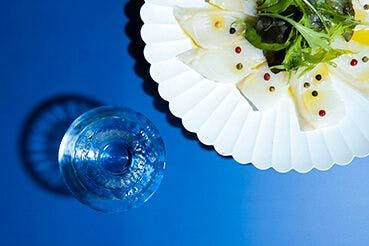
Cold, clean, delicate sake tends to pair well with dishes that possess similar qualities, like white fish carpaccio. | Photo by Nozomi Ashizawa.
It should come as no surprise that sake pairs well with food; so well, in fact, that it’s considered a pillar of Japanese cuisine (or “washoku”). Pairing sake with different foods may seem like a complex topic, but it doesn’t have to be intimidating. Including food in the tasting gives you a chance to get to know your guests’ tastes even better, can really help extend the life of an event (nothing constrains tasting like an empty stomach), and gives you the opportunity to explore the flavors in new contexts. While there are many articles and books written on the subject, here are a few bullet points to help you understand the basics:
- Balance is key: The sake should not overwhelm the food, and vice versa. You want them to work together, not battle it out.
- Regions provide clues: If the sake comes from a coastal region, as much of it does, seafood is a strong bet. What kind of seafood can depend on the region and the style of sake. Sake is often made with regional specialties in mind, so familiarizing yourself with that region’s cuisine will help immensely.
- Follow your nose: Use the aromatic notes of the sake you’re pairing to help you determine the best food to pair it with. If you are getting a lot of sweet smells, you could look for similarly fragrant dishes like panzanella. Light and airy, think white fish like sole. If you’re catching smokiness, shoot for something grilled or smoked. Strong lactic notes should lead you to cheese platters or pizza. Smell is one of your strongest senses — use it wisely.
- Opposites attract: This is as true for food and sake relationships as it is for human relationships. If you have a particularly bright, acidic sake, it will likely hold hands with a lemon-butter salmon. Acid can cut through rich, fatty dishes nicely for a more balanced dining experience.
- Mix and match: Don’t be afraid to try things with your guests in real time! Bring a variety of small bites (olives, sharp or creamy cheeses, nuts, tomatoes, etc.) and run the gauntlet. There will be some misses, but that’s part of the fun of exploring together.
There are myriad ways to approach pairing, but sake is a forgiving drink that was engineered over centuries to go with food, so be bold with your choices. To be on the safe side you can also look for sake that pairs well with a wide variety of food, like Sogen “Samurai” Prince or Suigei “Tokubetsu Junmai.” As always, you can scroll down the Tippsy page of a sake that you’re tasting to the “Recommended Pairing” section and remove some of the guesswork.
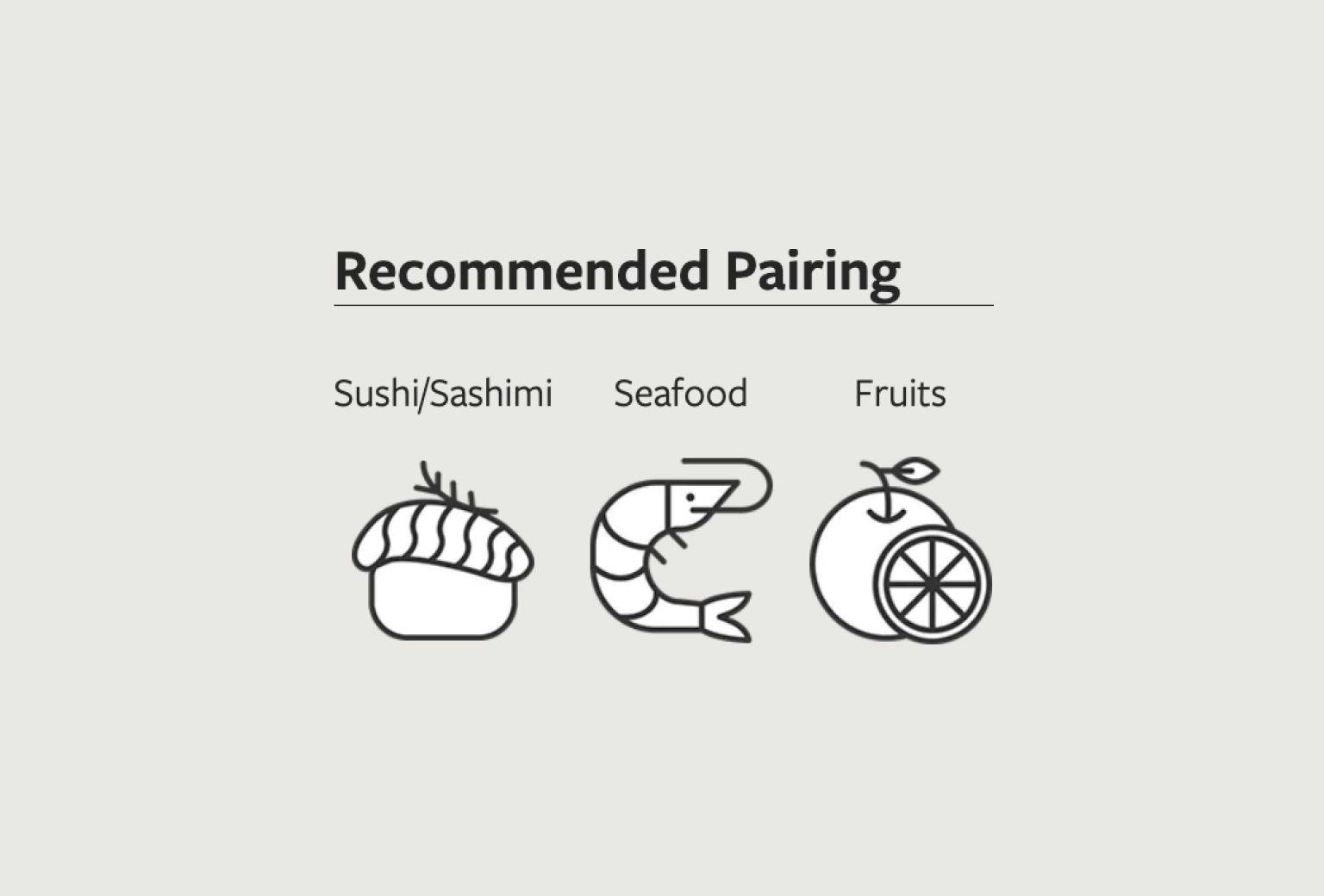
Pairing guidance.
Explore sake together
Sake tastings are explorations. Your guests should come away having learned something new, but when done properly, you should also have learned something new. Whether it’s a greater understanding of your guests’ tastes, an unexpected food pairing, or that, hey, it turns out you actually like koshu.
If you’re still not sure where to start, remember you can take some of the pressure off by consulting our “Best Bottles & Brands for Beginners” guide, take the fun route with the recommendation-generating sake quiz, or let Tippsy’s Starter Set do the legwork for you.
Ultimately, I hope you walk away with a greater appreciation of sake and a desire to include tastings in your regular rotation of meetups. Kampai!
References
Hirata Paku, K. “What is Washoku? 和食とは.” Just One Cookbook. 2017. https://www.justonecookbook.com/washoku/
Sullivan, T. “Sake Temperature.” Urban Sake
https://www.urbansake.com/sake-101/sake-temperature/
“Pillars of Japanese Cooking.” Mutual Trading Co.
https://mutualtradingco.com/pillars-of-japanese-cooking/
“Sake Food Pairings - Basic.” Japan Sake and Shochu Makers Association. 2023.
https://japansake.or.jp/sake/en/basic/sake-food-pairing/

Sam Fairchild
Sam Fairchild is a dedicated sake enthusiast and certified sake sommelier who has devoted years to learning all he can about the subject; he recognizes that this is a lifelong pursuit. Sam resides in San Francisco next to Golden Gate Park with his partner, children, dog and cat, bug pets, plants, and a dedicated sake fridge. When he’s not pouring or answering questions for friends and family, he enjoys assisting at sake events across the country.
Learn about Tippsy’s Editorial process
Recent posts
All about sake
Sign up to receive special offers and sake inspiration!
